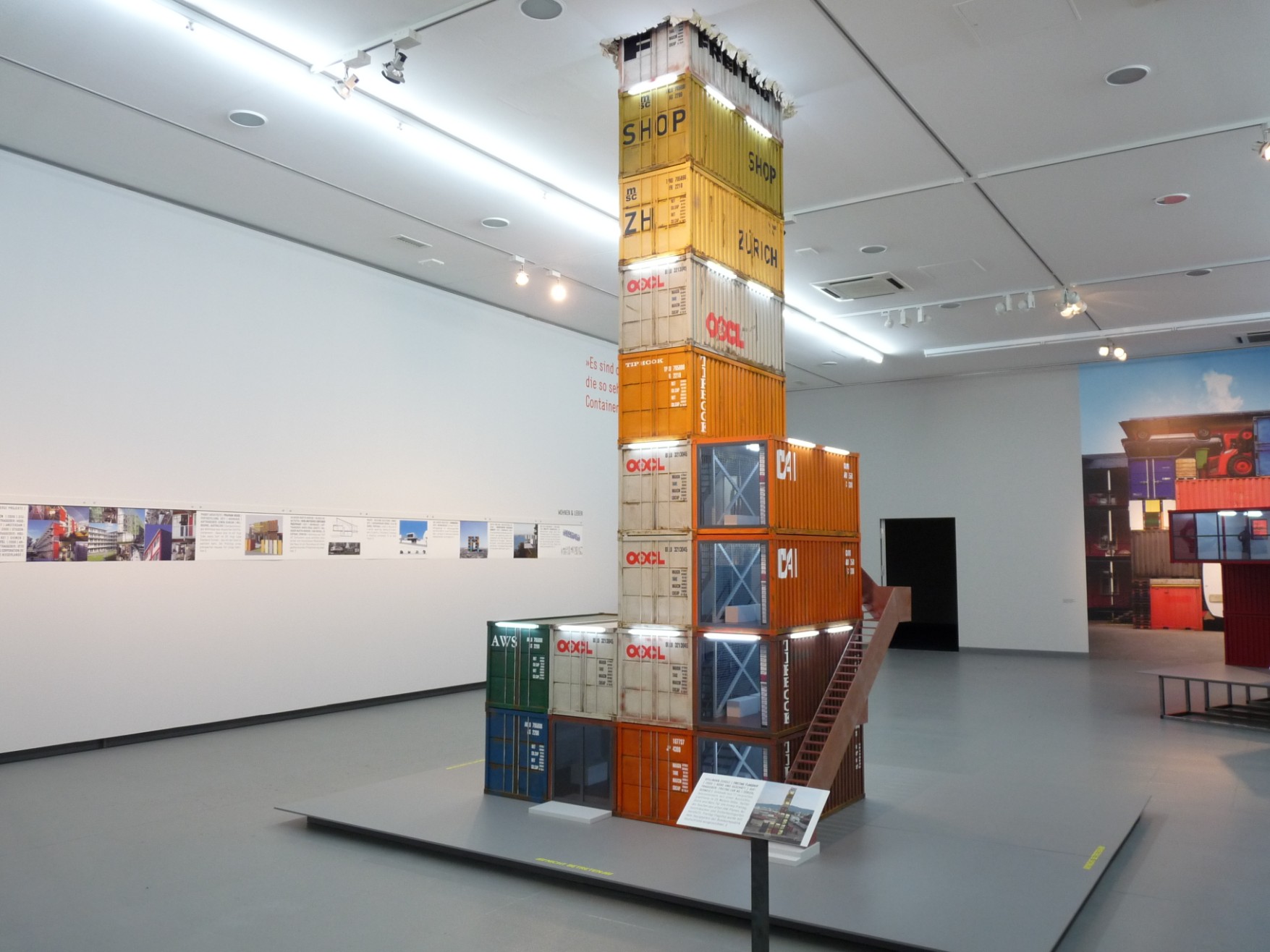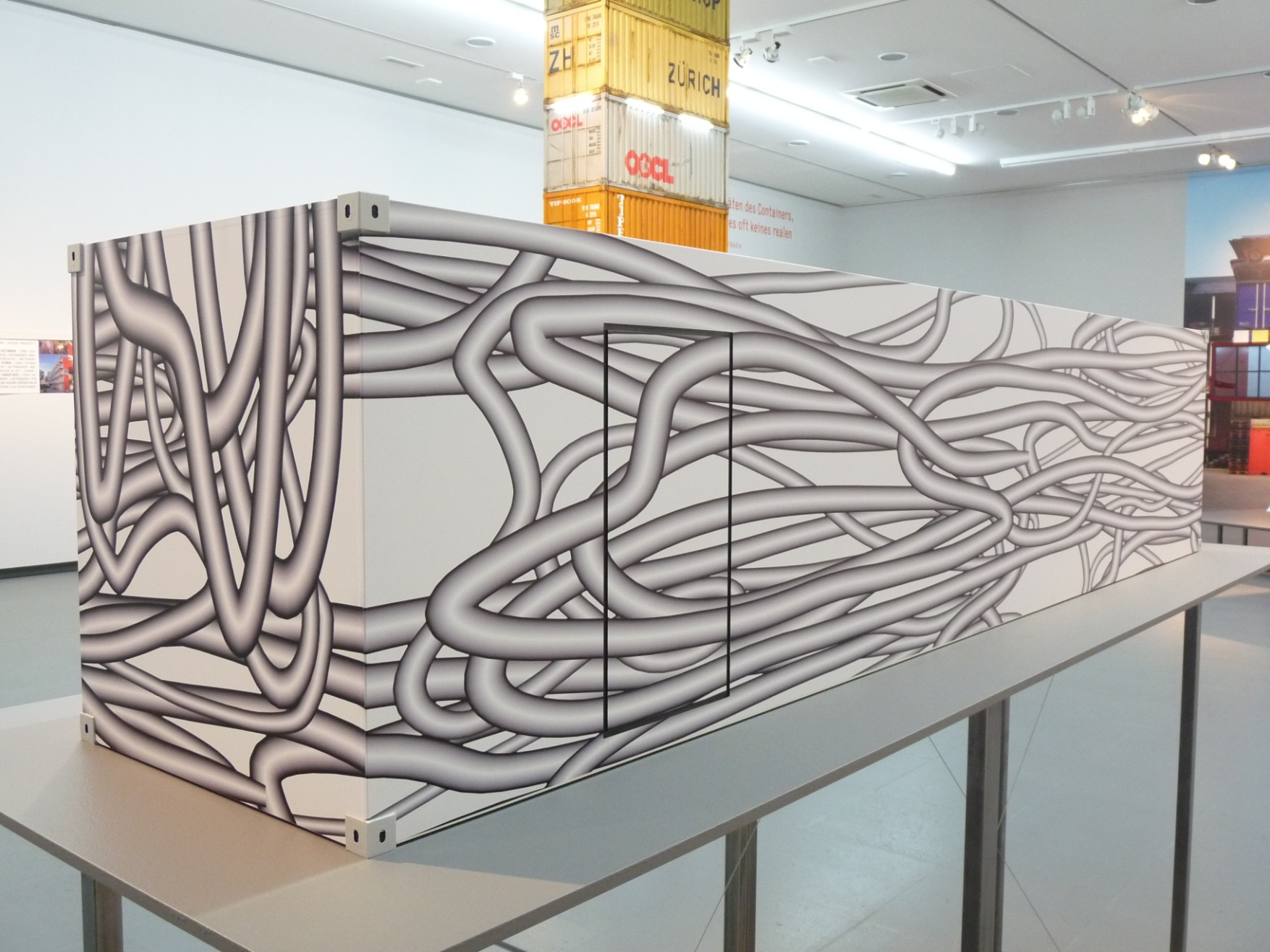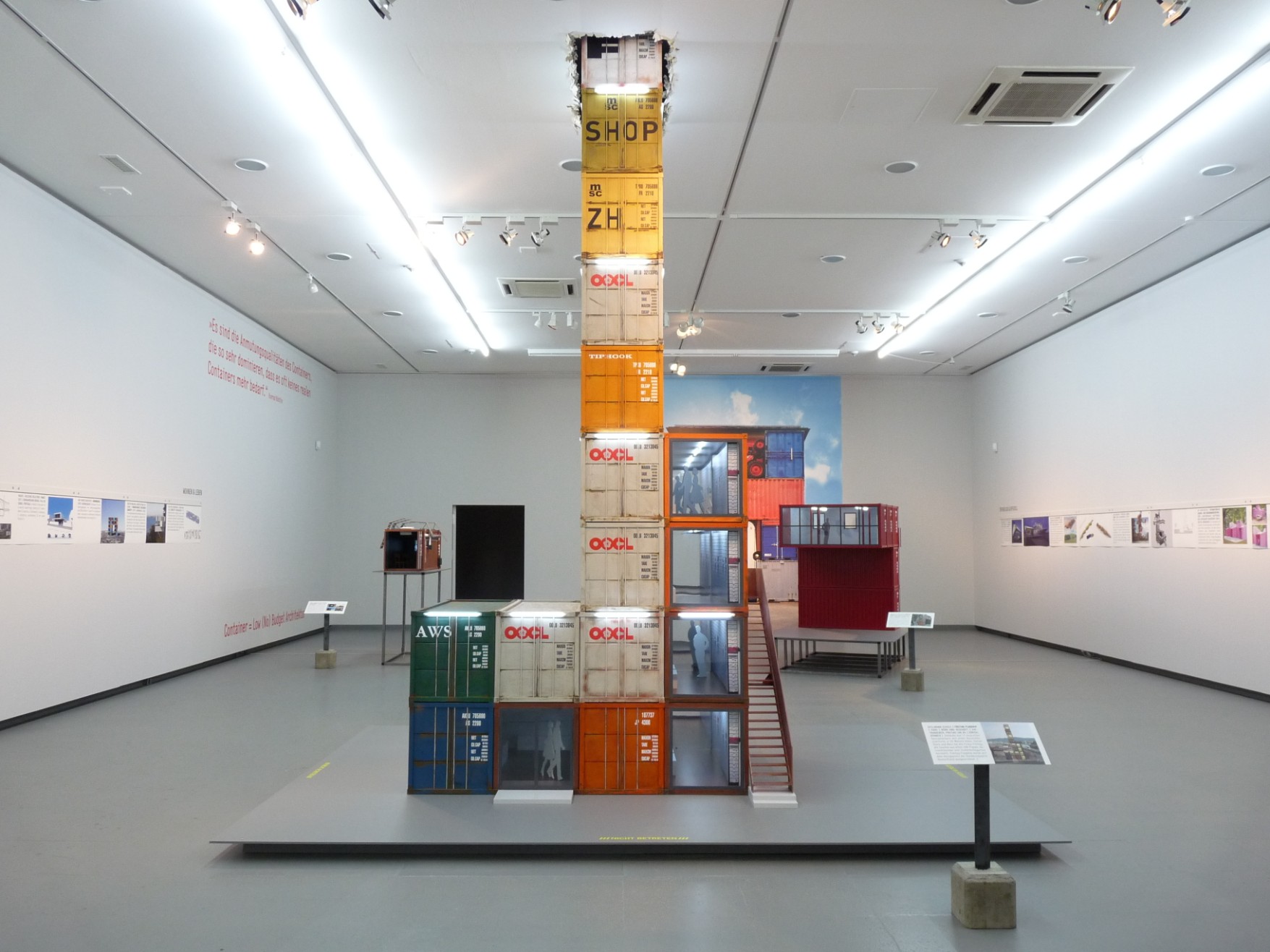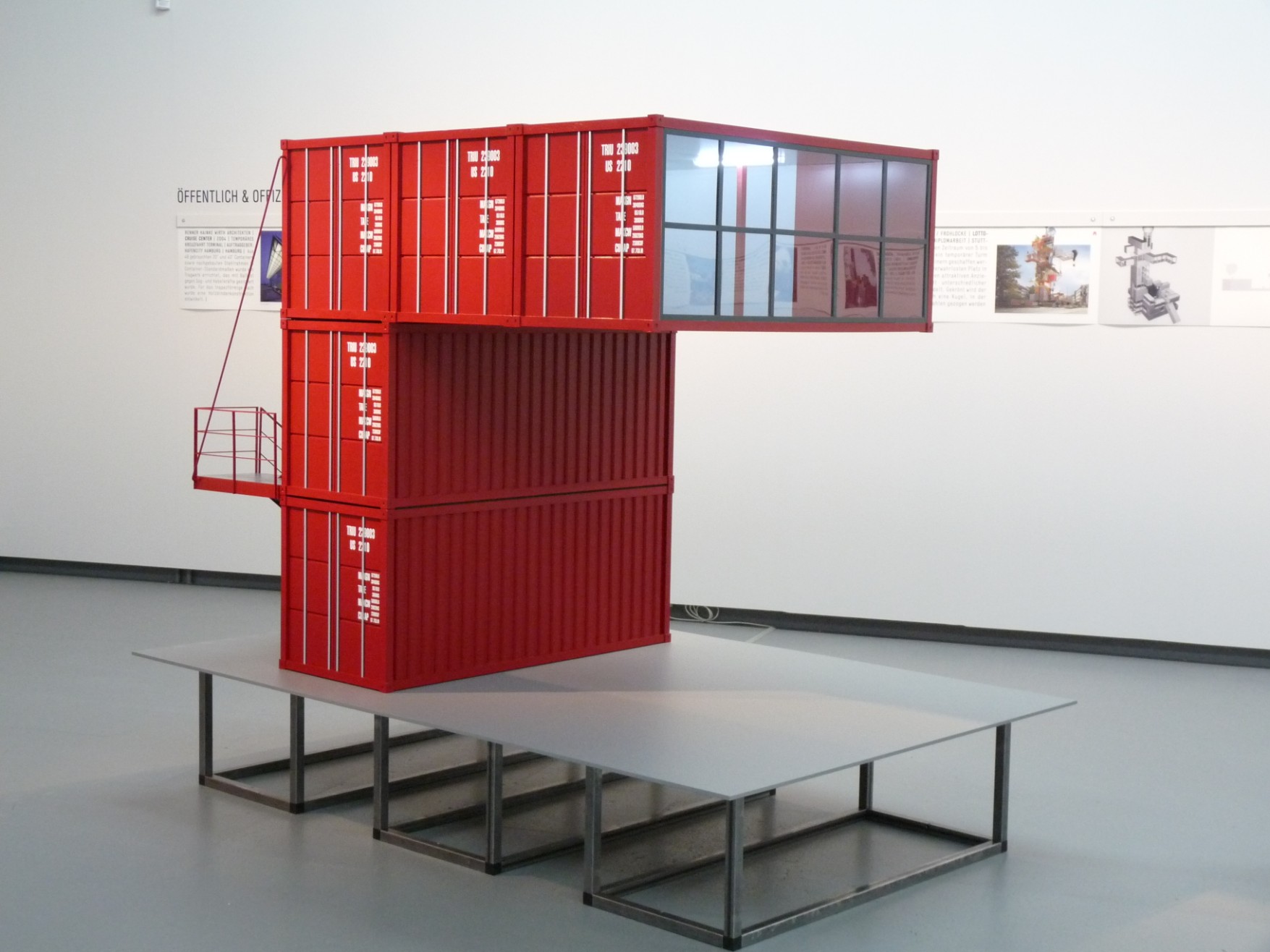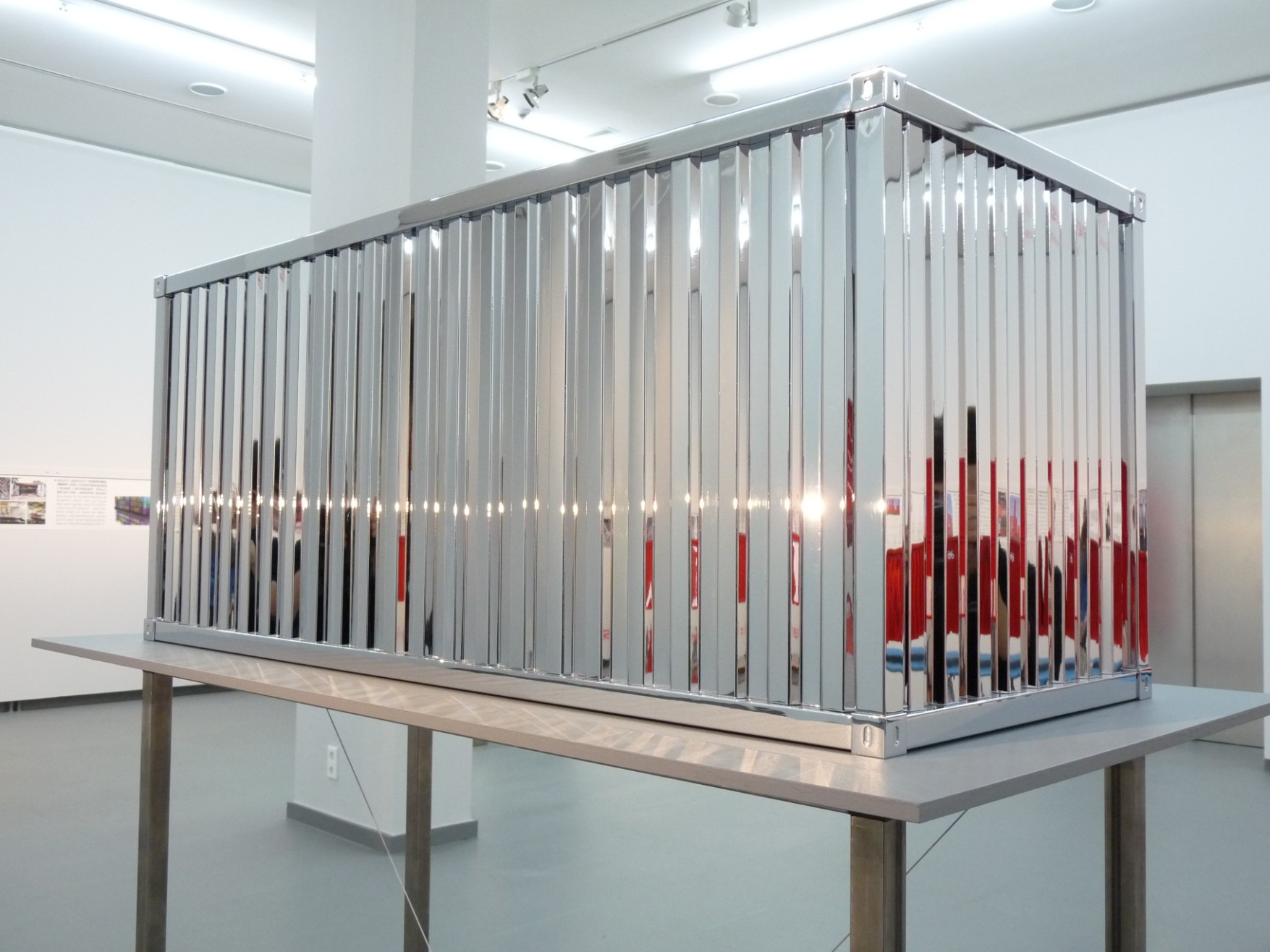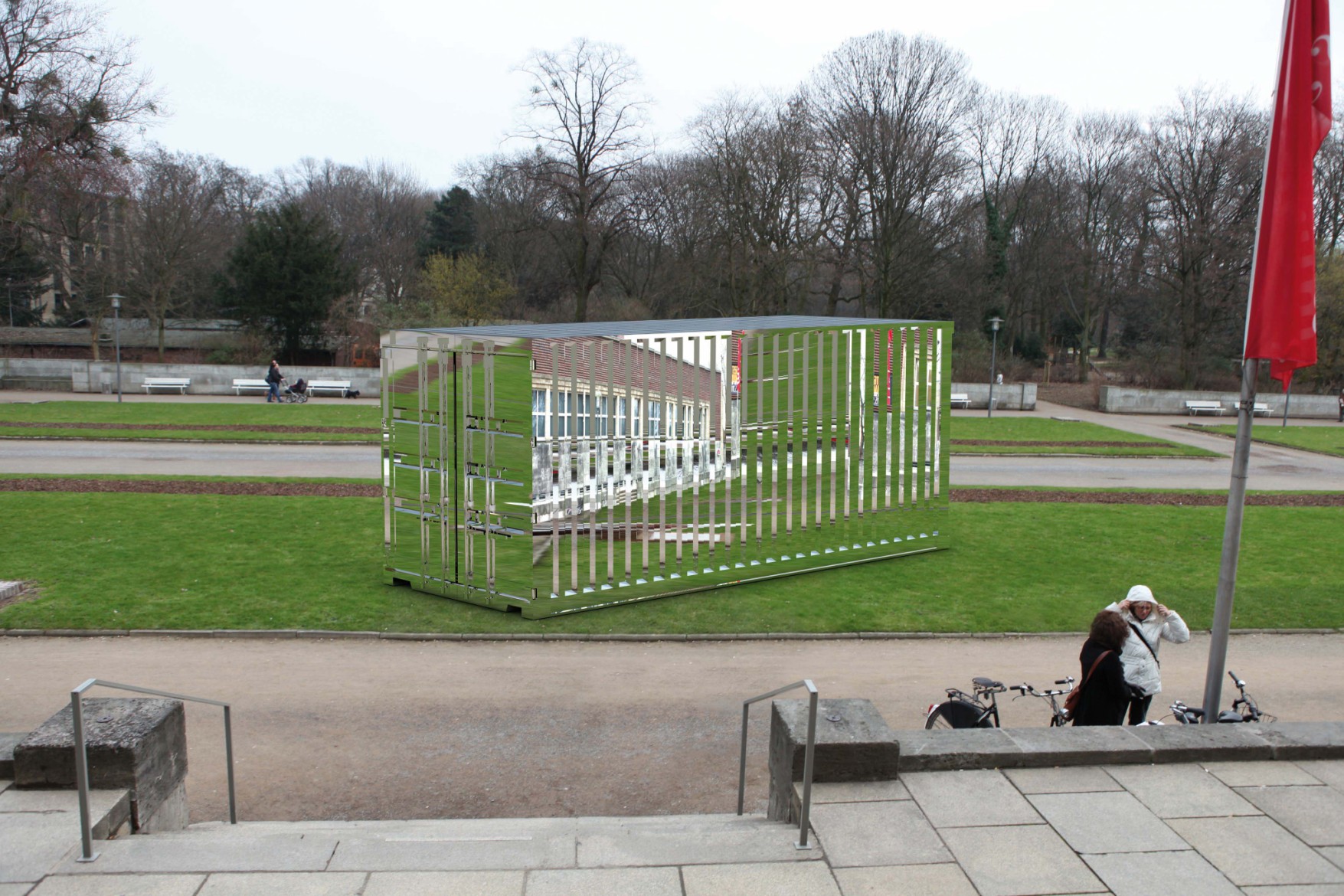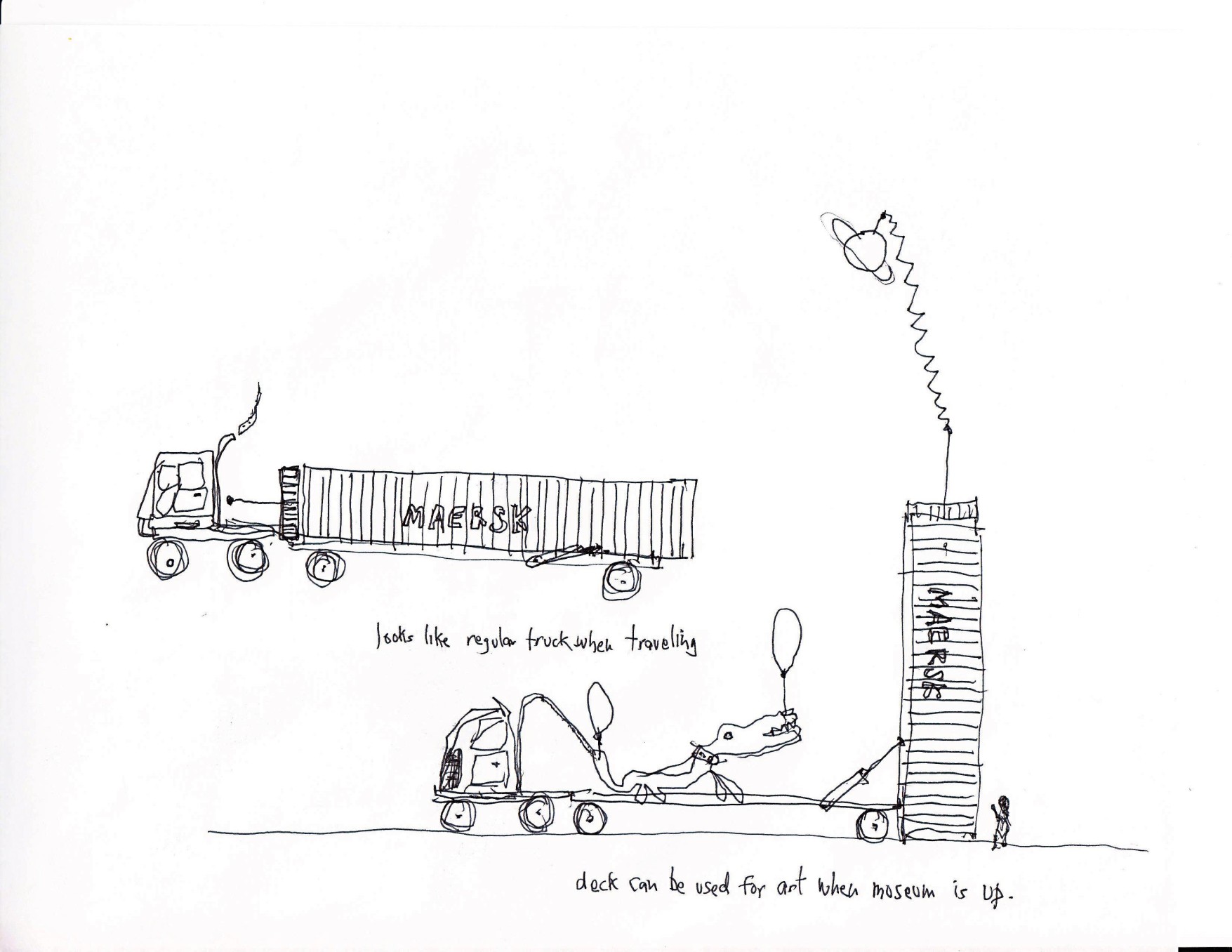Containers tell the world how well or how poorly the global economy is doing. Empty container ships indicate a downturn; fully loaded container ships—or orders for new, even bigger ships—are euphoriant symbols of better times. The container itself, which is 2.44 metres wide, 2.59 metres high, and either 6.06 or 12.192 meters long, has been the globally standardized transportation module since 1956. Thirty million of them can be found on the seas and oceans of the world. Now the container is also a source of fascination for many architects. The NRW-Forum Düsseldorf invited renowned architects, designers, and artists from around the world to submit designs for container architecture. The response was overwhelming. Submissions included not only existing container buildings, but also new designs that were created specially for the exhibition: original, practicable, fictitious, sensible, fantastic, minimalist, exotic, pragmatic, futuristic—the breadth of submissions was very wide. Two dozen of these designs have been reconstructed as models on a scale of 1:5 for the 'Container Architecture' exhibition; the highest of the models breaks through the ceiling of the museum. Over 100 designs were submitted for consideration and every one of them will be included in a frieze of pictures running around the walls of the exhibition space. A catalogue of the exhibition will be published.
But why organize an exhibition about containers? 'Containers are a symbol of the way we live and dwell in our globalized, mobile, nomadic age,' says exhibition organizer Werner Lippert when asked to explain what gave him the idea for the exhibition. He also quotes ethnologist Hartmut Böhme, who described the container as a 'fetish of the modern age' that stands for cataclysm, mobility, and change. For architecture critic and urban planner Dieter Hoffmann-Axthelm, 'the container is the building type of the near future'. The exhibition highlights the container as the pictogram for a new, urban way of life and/or simultaneously as an object of modern architecture.
Freight containers are now being used to create entire student residences, prize-winning homes, and cruise terminals. They are perched as penthouses on New York rooftops or as parasitic architectural works on the roofscape of San Francisco. They are stacked on top of each other to create residential buildings in London or high-rise apartment blocks in Melbourne. Designers are turning them into mobile homes or spectacular holiday homes. Artists are designing and realizing projects in and with containers. For example, one is used as a walk-in sculpture that doubles as a bridge over a river. The container is being used as a micro-house, as a building that can provide accommodation at short notice when homes are in short supply or during catastrophes, as a temporary building, as a travelling brand store ... in short, the container is an idea with a promising future.
Container Architecture
8 June to 4 September 2011
NRW-Forum Düsseldorf
Ehrenhof 2, 40479 Düsseldorf, Germany
www.nrw-forum.de
